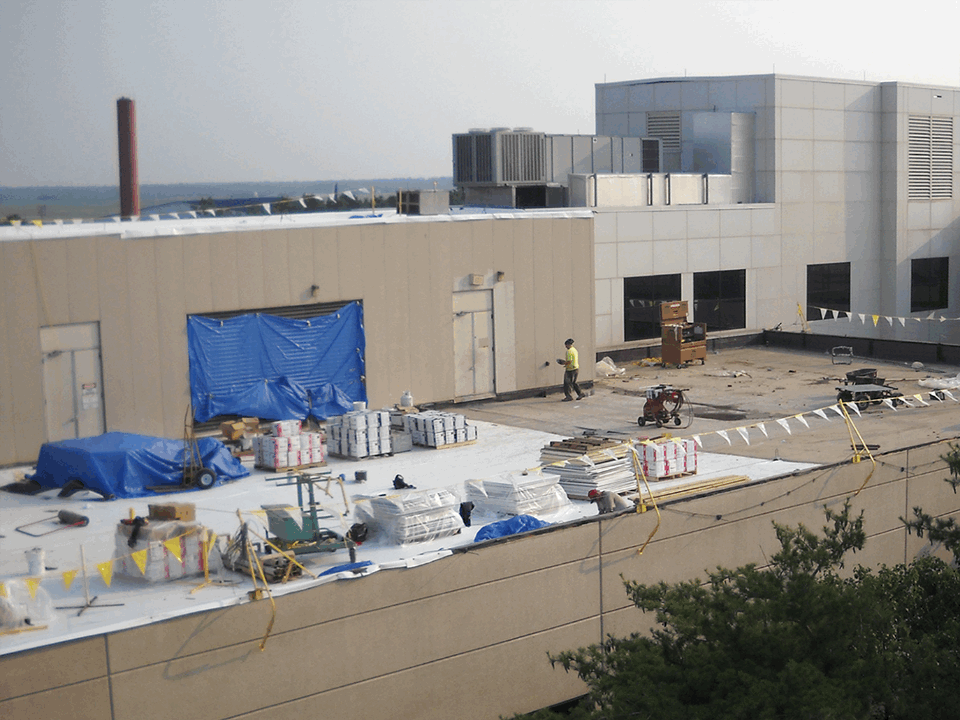The origin and cause of a roof fire that occurs during a re-roofing project can be difficult to determine. Roofing equipment and materials stored on the roof during the project often play a significant role in the fire’s development and firefighting suppression activities often greatly disturb the locations of ignition and fuel sources. Unless fire investigators can determine a specific origin and cause, and retain physical evidence that proves this, the cause will go undetermined. When the fire loss results in litigation, expert investigators often must focus on determining the cause of the fire solely through the analysis of evidence and documents. Any conclusion about the cause must result from a scientifically sound forensic investigation guided by NFPA 921. A 3D reconstruction of the pre-fire roof conditions is invaluable for orienting and guiding experts in this type of investigation.
The Fire
The roofing crew delivered the materials and equipment needed to complete a re-roofing job on a 14,000-square-foot roof. The roof was one of several in a series of linked buildings in a massive office and laboratory complex. The replacement roof was an insulated high-performance roof system composed of multi-layers of foam insulation and a rubber membrane finish. As the project progressed, materials and equipment were moved and stored on newly completed roof areas. Over several days, the crew completed work on about 10,000 square feet of roof and prepared the remaining 4,000 square feet for new roofing.
On a hot Friday afternoon in June, the crew packed up and left for the day. Half an hour later the roof was on fire. The stacked foam insulation fueled a massive bonfire on the roof deck. Propane tanks exploded and one launched into the sky like a rocket. Firefighters applied thousands of gallons of water to put the fire out. The resulting damage to the interior and building contents was substantial.
Two images combined to show pre- and post-fire conditions.
The Investigation
The resulting litigation centered around the responsibility of the roofing contractor. What accelerants or hazardous materials were up there? Are they permitted by code to store flammable roofing materials on the roof? What hot work was performed just before they left for the day? Was anyone smoking cigarettes on the job? And NFPA 921 guidelines suggest considering any other possible causes of the fire. Was it an electrical fault? Spontaneous combustion? Lightning?
In this case, it was critical for investigators and experts to develop a clear and accurate understanding of what was on the roof and where it was in order to analyze the fire and determine the origin and cause. Fortunately, the roofing crew took some photos which were helpful in locating potential fuel and ignition sources. The combination of pre-and post-fire photos and building plans provided an excellent source of visual and dimensional information so that a 3D reconstruction of the pre-fire conditions could be created.
3D Reconstruction
The completed 3D reconstruction was used to orient the investigative team members to the building as well as the layout of materials and equipment on the roof. Multiple views of the pre-fire roof condition were generated. These were used to narrow down the area of origin. Images were generated based on witness locations and observations of the initial fire location. Other images were created replicating views of security cameras that captured the smoke plume and propane tank explosions. Intersecting lines of sight from these sources were plotted in the 3D space to narrow down the origin location. The 3D model and material locations were also used as a basis for the creation of an FDS fire model simulation to analyze the plume dynamics, determine wind direction and fire size over time, and confirm the origin location.
Conclusion
Any conclusion about origin and cause must result from a scientifically sound forensic investigation guided by NFPA 921. A 3D reconstruction of the pre-fire roof conditions is invaluable for orienting and guiding experts in this type of investigation.




